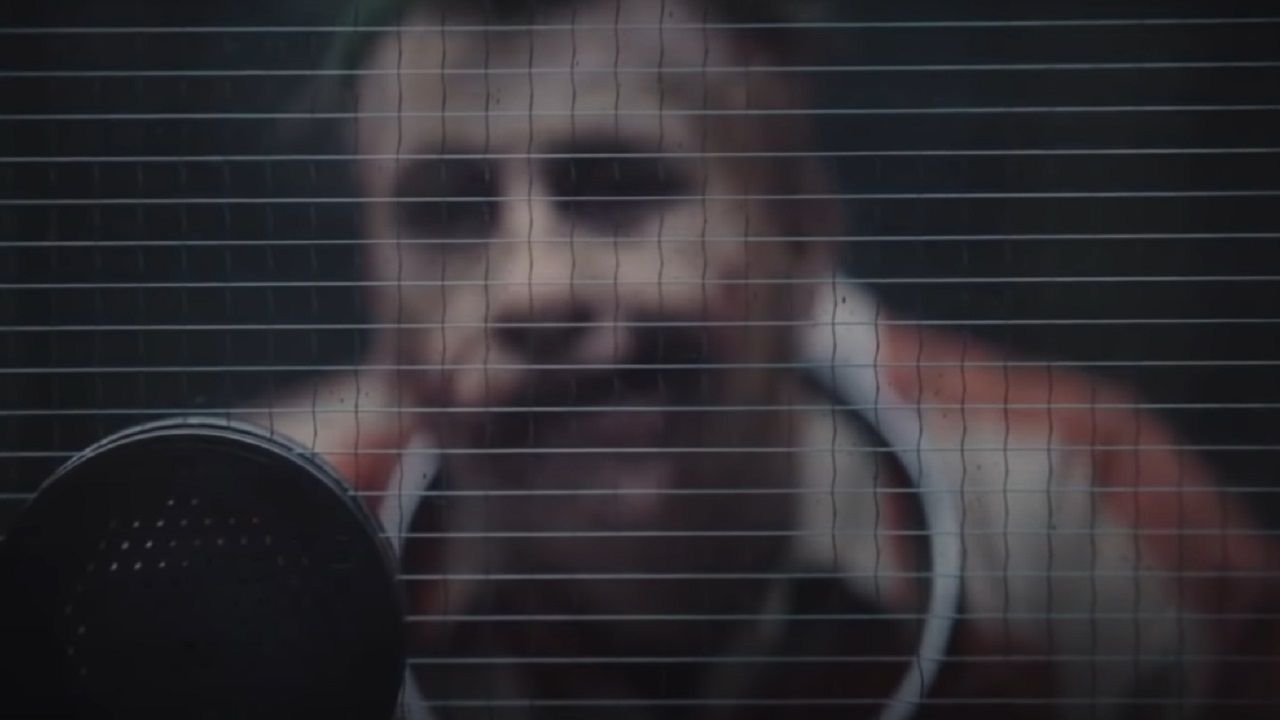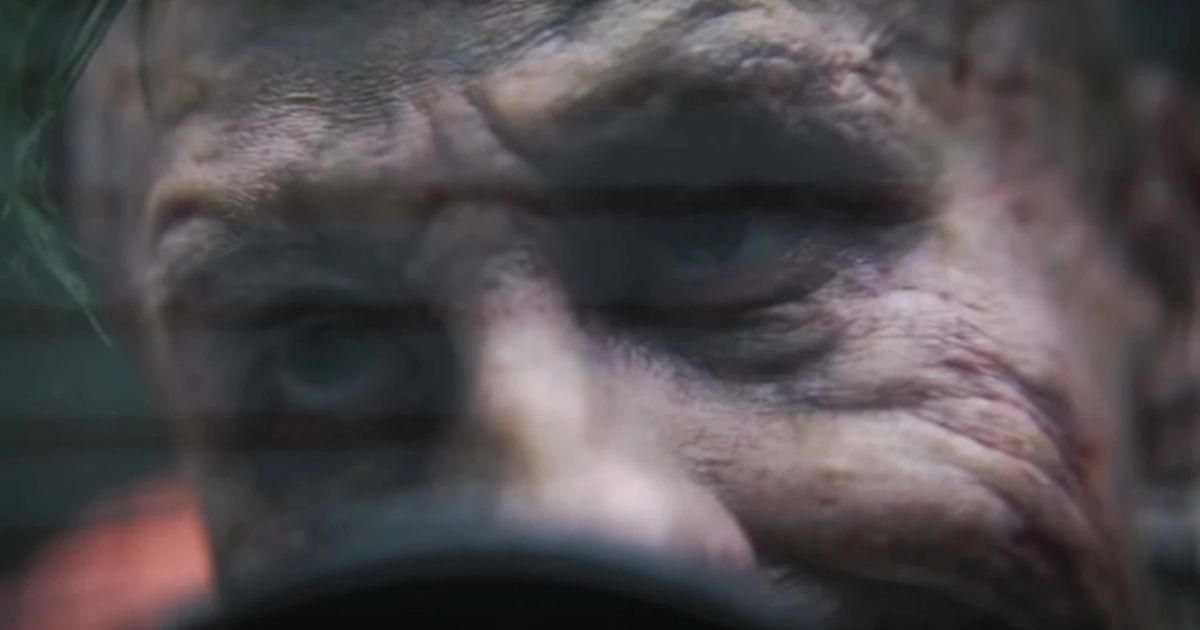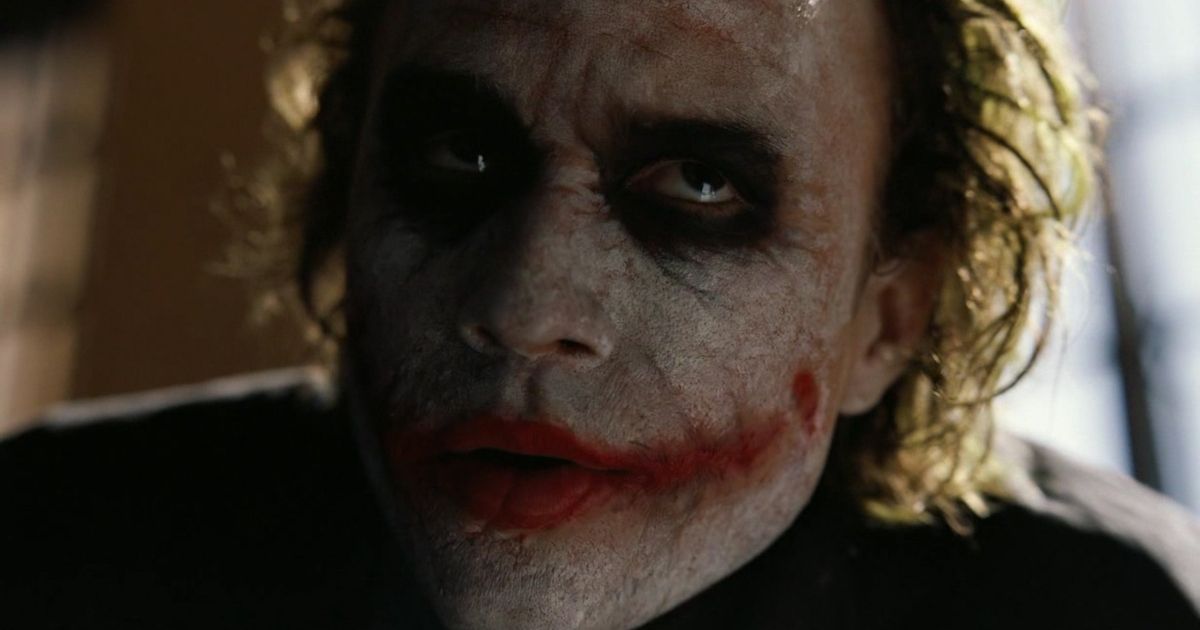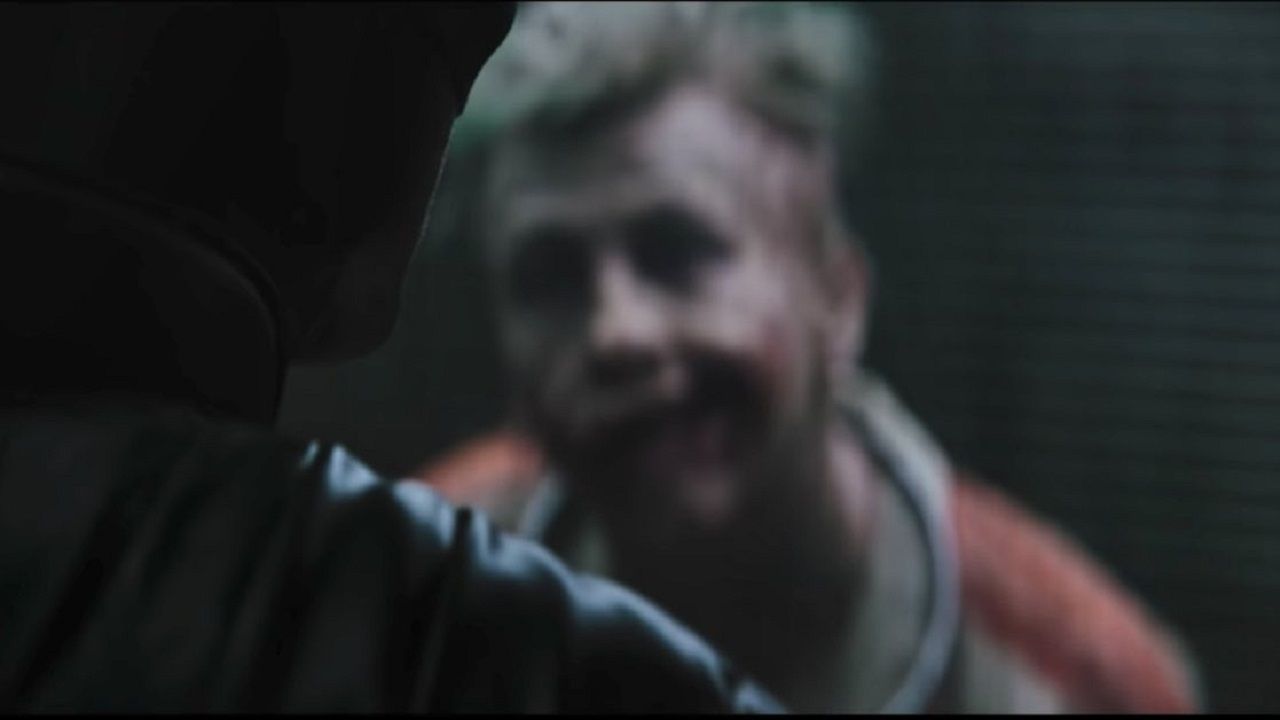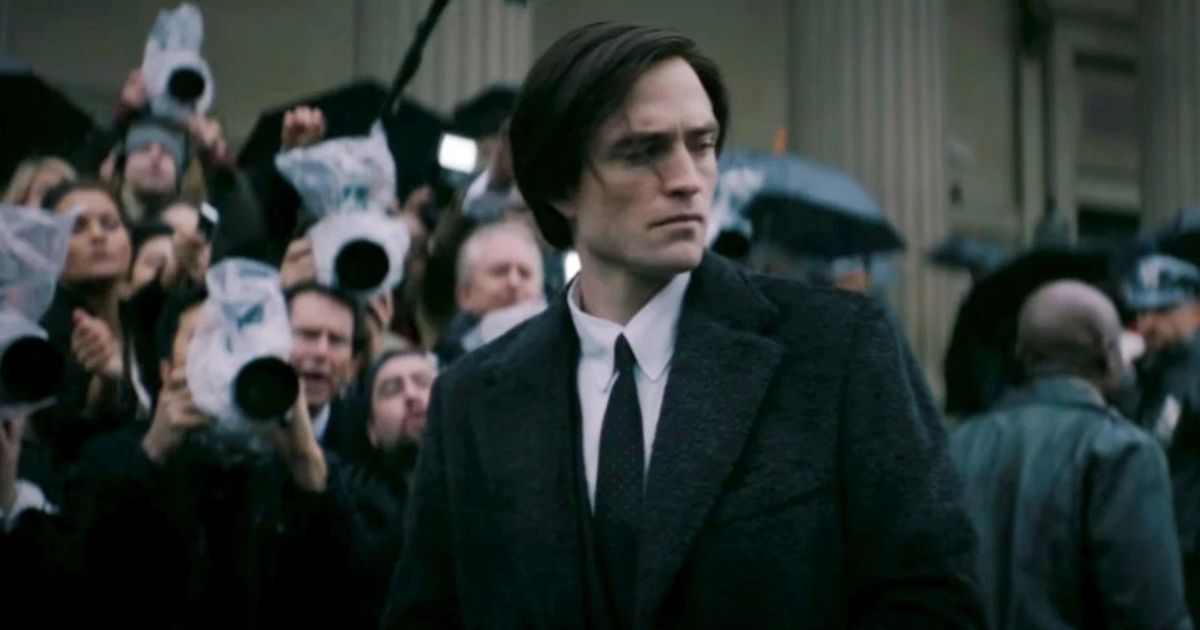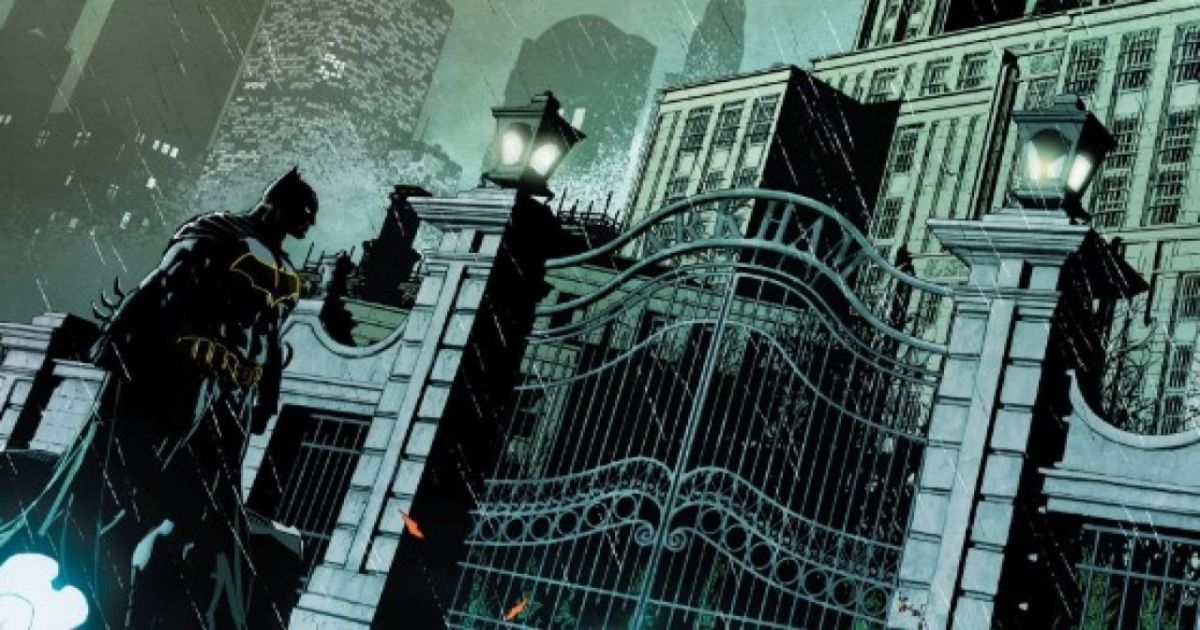The ending of The Batman sent the Internet into a debate on Barry Keoghan’s “Unnamed Arkham Prisoner,” who was quite evidently, Batman’s archnemesis Joker. Keoghan’s off-camera cameo in the film led to theories of a potential sequel in development, which may put Joker against Gotham’s Knight, continuing a pre-established history between the two that was hinted at in the first film. But, while discussing Keoghan’s version of Joker, director Matt Reeves was quick to reveal that the presence of Joker in the movie doesn’t necessarily imply a sequel in works centered around him. Still, the scene was enough to establish that Batman and Joker had come face to face earlier and that there was a chaotic rift between them that could bring Gotham to its knees.
Now that Matt Reeves has publicly released a deleted scene from The Batman, featuring Robert Pattinson and Barry Keoghan face to face, the ideas for a sequel don’t look scarce. In fact, the background for the character of Joker that the deleted scene established has further put more sense into a story featuring Batman and his clown prince of crime, with the potential to become a successful sequel.
The Joker of Batverse
First, let’s dive into that grotesque makeup and look for the Joker that Matt Reeves chose to go for Barry Keoghan’s Joker. Unlike the previous iterations, this Joker wasn’t about having makeup and scars. Well, not just the two alone. Keoghan’s look in the film was greatly inspired by the disfigured Joker, one might recall from Batman: Arkham Asylum. Not only are his scars denser, but his teeth are also all messed up, with his lips swollen and cut off in places due to the scars. His head further reveals that he has some kind of infection there, probably from past injuries, which explains his patchy hair, poorly-dyed in green and deliberately dirty.
The character has been made to look unpleasant at first sight, inducing the corrupt and sociopathic attributes of the character right within his looks. His grin, which becomes iconic due to his scars that make up for an always-smiling face, is actually brutally blistered. Matt Reeves had earlier explained that the iteration has a congenital condition that makes him smile. Hence, the scars here are different from any previous live-action portrayal of the character.
The bold look, which is quite terrifying, says how this Joker could be more ruthless and far more dangerous, capable of frightening the hell out of his victims. The Batman also featured Riddler (Paul Dano) in an entirely new look, which was different from his look in the original comic books. The idea is to make the villains seem far more terrifying than their comic book counterparts, creating an aura of a psychopath killing machine around them. It’s a look that serves the horror and noir elements of The Batman and thus, can thrive among the audience if the sequel and other spin-offs of the film share a similar thematic tone and setting.
Relationship Between Batverse’s Joker and Batman
The deleted scene cleared the clouds on Batman and Joker’s history in Batverse. The film is set two years into Bruce Wayne’s work as Gotham’s vigilante, implying that the drifter has already met a bunch of his nemesis from his rogues' gallery in the comics. The final scene that revealed Keoghan’s cameo in the movie further hinted at the fact that Joker was somehow admitted into Arkham by Batman sometime earlier. The deleted scene picks right off from that same moment.
In the scene, Joker reveals that the day is their first anniversary, indicating that they first met a year ago when Joker probably plotted something menacing against Batman and Gotham. The way Joker faces Batman clearly shows his interest in this Bat vigilante, a mythical figure he sees as a perfect adversary in his anarchist plans. Matt Reeves and Peter Craig's writing further deepens the chemistry between the two. Joker cleverly dives into the Bat's state of mind, revealing the similarities he shares with the serial killer he is after. He taunts Batman about past wounds, unhealed trauma, and having a warped ambition, disguising all of it as traits he witnessed in Riddler's crime.
The performance also pointed at the iteration Heath Ledger brought to life in The Dark Knight. His Joker was adamant about taking the rivalry with Batman to his grave and not killing him. A similar idea is also present in Barry Keoghan's Joker. When Batman comes to gain Joker's perspective of Riddler and find a pattern in his crime, he really goes on to help him. Though he's curious to know who has sent Gotham into disarray, Joker wants to think clearly and understand Riddler from a psychological point of view. Instead of connecting the dots between Riddler's political murders, Joker urges Batman to dive into the former's motives.
Furthermore, the idea that Batman comes to Riddler for help further ignites a sheer interest in the relationship the two share. Whatever the two have gone through while fighting each other, it must be a really intense and long war. Batman clearly has studied Joker and has fought a pretty long battle with the clown. Batman knows Joker’s curiosity for crime and understands that his help could lead him to a possible revelation about the Riddler. This whole chemistry between the two, which is well established in Matt Reeves’ Batverse, can spin an intensifying and thrilling tale of blood and chaos, and hence, Barry Keoghan’s Joker can lead The Batman 2.
Joker’s Probable History with Batman
The Joker in The Batman has been imprisoned in Arkham for a year now. There’s no clue of the crimes he was committing and plotting that landed him in there, and there’s no idea what brought him to face Batman. There’s a probability that he got damaged and disfigured during his confrontation with Batman. One could say that maybe, Joker wasn’t the master criminal earlier in Reeves’ Batverse as depicted in earlier live-action Batman films. It’s possible that he underestimated Batman in the first place, and now, he is correcting the mistake.
The Joker has probably been learning and studying Batman's patterns and motives while staying in Arkham, and that's how he is getting cleverer. At the end of the film, he manages to calm the now-imprisoned Edward Nashton and motivate him with a hint at a new plan that would take Gotham by an unexpected storm. It suggests that the deleted scene was intended to hint at the possible origins of the Joker as well. The Clown Prince of Crime is now expanding his motives beyond chaos and anarchy and making his agenda personal by seeking a direct conflict with his counterpart. In the deleted scene, Barry Keoghan's Joker taunts Batman for his conflicted ideologies and his distorted sense of good and evil. One can infer how Joker is already on his mission to use his manipulative schemes to take on Batman. The only thing he needs right now is a way out. Joker, one year later, is far more vigilant with his schemes and is no longer a regular criminal.
This whole notion of Joker rising in the ranks among Gotham’s criminals (which can spin an entire story focused on his rivalry with Penguin) can not just be an epic sequel to The Batman but can set up a Batman: Arkham-Esque franchise.
Could Joker Be a Fit for the Batman 2?
Several questions surrounding Barry Keoghan's Joker are now answered with the deleted scene. In just a five-minute sequence, Matt Reeves created enthralling chemistry between the two characters on-screen. The relationship between the insanely grotesque Joker and a naive and misguided Batman was clearly there in the atmosphere that scene created. Ripping off these mature characters from the comics and forcing them back into their learning phases can bring out a fresh outtake on establishing Batman's lore in live-action and bringing the comics to life in an extraordinarily unique manner.
In the scene, Joker laughs at Batman's idea of criminals when he suggests that Batman may be in support of Riddler somewhere deep down. The comment indicates a more vulnerable Batman, on whom Joker already has a tactful psychological advantage. Given the detective-like iteration of Pattinson's Batman, a sequel putting him against a maniac like Joker would be a thrilling adventure, where we can see Bruce growing both as an individual and as the city's protector, learning the deeper meaning of his vigilantism, which extends beyond the idea of hope (as he realizes in The Batman).
Furthermore, having Keoghan’s Joker in the sequel would perfectly continue the noir-style arc of Batman, as well as the thematic cues of chaos and impending power grab in Gotham that The Batman sets up. Keoghan's discomforting and monstrous take on Joker also fits Matt Reeves' style of filmmaking, as the director is heavily inclined on doing justice to a particular genre and thus, can create an ultimate crime-thriller showdown disguised as a superhero film in the future. For Batman, Gotham is far more than a home. It's his father's legacy, which he wants to protect and correct. On the other hand, Joker wishes to destroy the city as he sees it as the only way to truly defeat Batman. For both of them, Gotham is not just a place but a character with its own emotional significance. And that's how Reeves has used Gotham in The Batman, not as a city but as a symbolic character. Given Reeves’ vision for Gotham in Batverse, the iconic conflict between Batman and Joker can serve true justice to a sequel.
Reeves hasn't confirmed anything but the fact that he went on to film a proper scene with Keoghan as Joker means that he has something for the character in mind. And it's clear that the demented altercation between Batverse’s Batman and Joker would amplify the tacit storm in Gotham, which was left amidst a massive administrative distortion in the first film.
Can It Tie-In With Arkham Spin-Off?
The Arkham spin-off is in the works at HBO Max; however, we won't see a release for a while as the platform has first fast-tracked production on Colin Farrell-starrer Penguin. As Reeves has pointed out, the Arkham spin-off is an evolution of the previously planned GCPD spin-off and will focus on the characters and their origins from the "haunted house that is Arkham." Given that Joker is the most valuable asset of the asylum and the craziest of them all, the spin-off can dive into his origin and focus on how he landed in Arkham after his first defeat. Just like Reeves perceived Gotham, he plans on creating Arkham as a character, focusing on the haunting things that go in those cells. If there's any character who can bring out the true form of insanity from Arkham, it has to be the Joker.
Matt Reeves hasn’t confirmed anything yet, but it can be said that the forthcoming portrayal of Barry Keoghan as Joker is inevitable. There are still doubts on whether Joker should be the next villain against Pattinson’s Batman or a new villain should be introduced before this showdown happens. Despite it, Barry Keoghan’s Joker is unique and can stand on its own even amidst several comparisons that will definitely follow. With the deleted scene establishing so much about the character, it surely will be a treat for the viewers to have Joker face Batman in real life; the two entirely different iterations of their respective comic book characters, fighting a battle in a dark, gruesome, and gritty setting.

